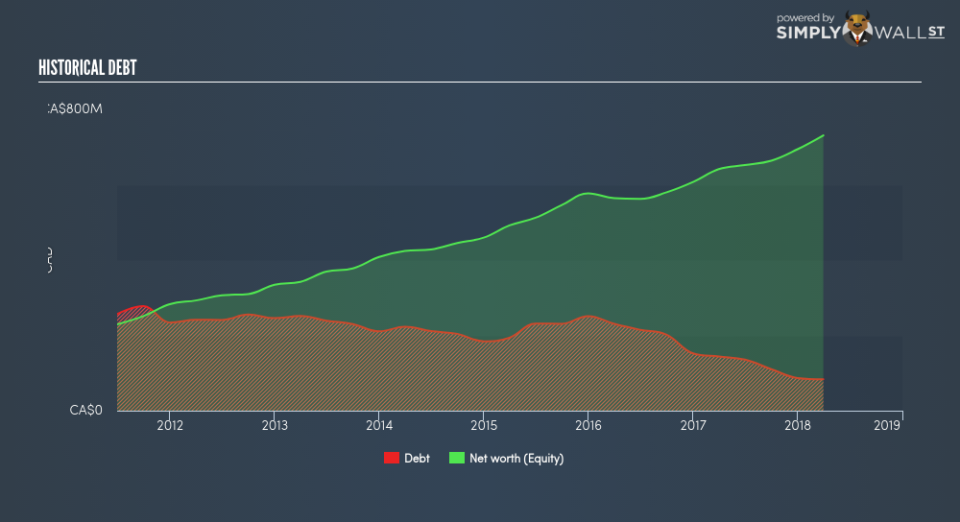How Financially Strong Is Magellan Aerospace Corporation (TSE:MAL)?

Magellan Aerospace Corporation (TSE:MAL) is a small-cap stock with a market capitalization of CA$962.78m. While investors primarily focus on the growth potential and competitive landscape of the small-cap companies, they end up ignoring a key aspect, which could be the biggest threat to its existence: its financial health. Why is it important? Evaluating financial health as part of your investment thesis is essential, since poor capital management may bring about bankruptcies, which occur at a higher rate for small-caps. Here are a few basic checks that are good enough to have a broad overview of the company’s financial strength. Though, this commentary is still very high-level, so I’d encourage you to dig deeper yourself into MAL here.
How does MAL’s operating cash flow stack up against its debt?
Over the past year, MAL has reduced its debt from CA$152.33m to CA$86.90m – this includes both the current and long-term debt. With this reduction in debt, MAL’s cash and short-term investments stands at CA$40.39m , ready to deploy into the business. Additionally, MAL has produced cash from operations of CA$129.95m over the same time period, leading to an operating cash to total debt ratio of 149.54%, meaning that MAL’s debt is appropriately covered by operating cash. This ratio can also be interpreted as a measure of efficiency as an alternative to return on assets. In MAL’s case, it is able to generate 1.5x cash from its debt capital.
Can MAL meet its short-term obligations with the cash in hand?
Looking at MAL’s most recent CA$213.41m liabilities, it seems that the business has maintained a safe level of current assets to meet its obligations, with the current ratio last standing at 2.09x. Usually, for Aerospace & Defense companies, this is a suitable ratio as there’s enough of a cash buffer without holding too capital in low return investments.
Is MAL’s debt level acceptable?
MAL’s level of debt is appropriate relative to its total equity, at 11.39%. This range is considered safe as MAL is not taking on too much debt obligation, which may be constraining for future growth. We can test if MAL’s debt levels are sustainable by measuring interest payments against earnings of a company. Ideally, earnings before interest and tax (EBIT) should cover net interest by at least three times. For MAL, the ratio of 25.64x suggests that interest is comfortably covered, which means that lenders may be less hesitant to lend out more funding as MAL’s high interest coverage is seen as responsible and safe practice.
Next Steps:
MAL’s high cash coverage and low debt levels indicate its ability to utilise its borrowings efficiently in order to generate ample cash flow. In addition to this, the company exhibits proper management of current assets and upcoming liabilities. I admit this is a fairly basic analysis for MAL’s financial health. Other important fundamentals need to be considered alongside. You should continue to research Magellan Aerospace to get a more holistic view of the stock by looking at:
Future Outlook: What are well-informed industry analysts predicting for MAL’s future growth? Take a look at our free research report of analyst consensus for MAL’s outlook.
Valuation: What is MAL worth today? Is the stock undervalued, even when its growth outlook is factored into its intrinsic value? The intrinsic value infographic in our free research report helps visualize whether MAL is currently mispriced by the market.
Other High-Performing Stocks: Are there other stocks that provide better prospects with proven track records? Explore our free list of these great stocks here.
To help readers see pass the short term volatility of the financial market, we aim to bring you a long-term focused research analysis purely driven by fundamental data. Note that our analysis does not factor in the latest price sensitive company announcements.
The author is an independent contributor and at the time of publication had no position in the stocks mentioned.

